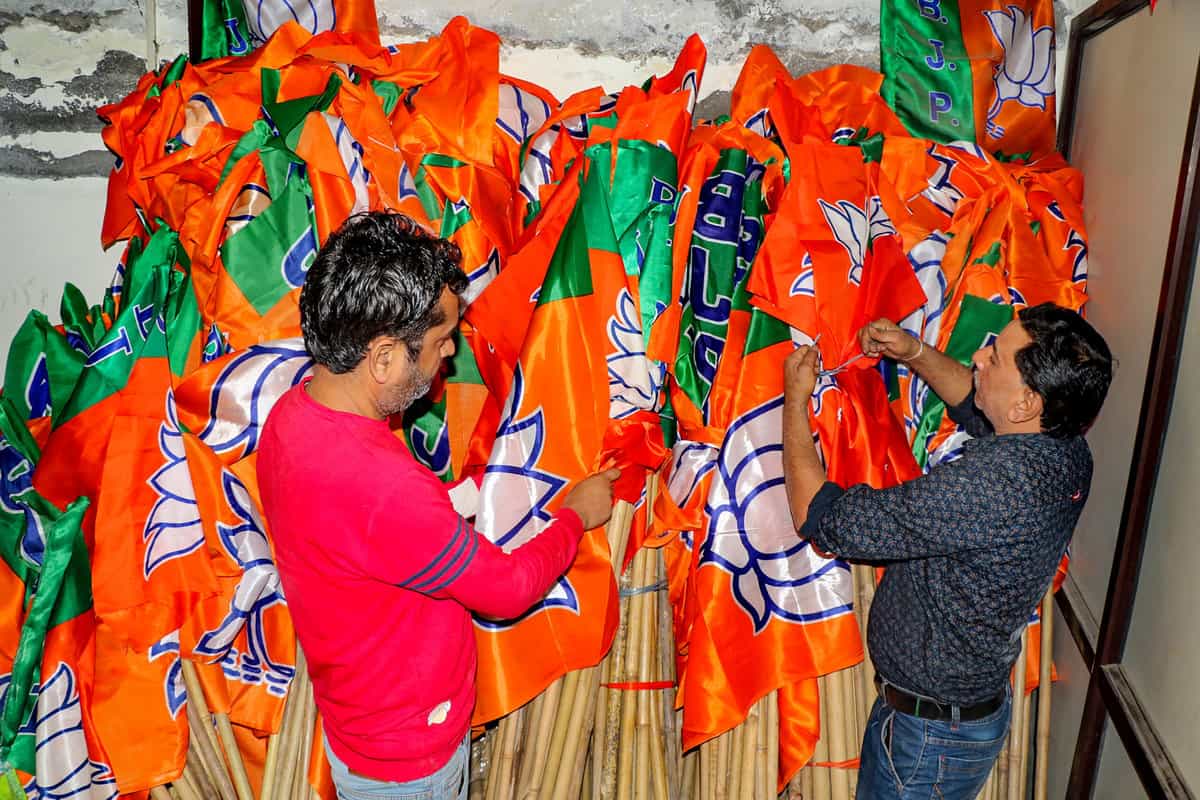
It is election season in 64 countries, such as India, the US, the UK and the European Union. Political advertising is increasing worldwide. Political parties and candidates often use negative campaigns to make themselves appear better and their opponents weaker.
Parties have used negative campaigning since the 1828 US presidential race. Historians say the John Quincy Adams/Andrew Jackson contest was the nastiest. In 1964, Lyndon Johnson discredited his opponent, Barry Goldwater, using radio ads, including the “Daisy ad.”
Donald Trump aired an ad depicting his opponent, Hillary Clinton, collapsing in public during the 2016 US Presidential campaign. In the 2020 election, Presidential candidates Trump and Joe Biden engaged in negative campaigning. Trump criticised Biden’s mental abilities, while Biden attacked Trump’s handling of COVID-19 and his character. In 2024, too, the negative ads continue.
The Conservative Party portrayed Jeremy Corbyn as a significant security threat during the 2019 UK General Election. In the 2021 German Federal Election, the Social Democratic Party targeted Armin Laschet using images of him laughing while visiting a flood-affected region.
Since Prime Minister Modi emerged on the national scene in 2014, the use of technology and ad spending during the election campaign have enormously increased. Leaders are now trained to present themselves, communicate effectively, and make effective speeches. BSP chief Mayawati was told what to wear. Regional leaders have also employed foreign agencies. For instance, Tamil Nadu Chief Minister M.K. Stalin was told to wear jeans and T-shirts to impress the voters.
Late Congress leader Rajiv Gandhi lost the 1989 elections because of hostile campaign slogans like’ “Galli galli me shor hai, Rajiv Gandhi chor hai.’ The Bofors scam brought him down.
Candidates adopting a “hit first, hit hard, and keep hitting” approach indulge in personal attacks and fear tactics. Even after ten years of rule, Prime Minister Narendra Modi has not stopped blaming Congress for all the country’s problems.
The Election Commission limits candidates’ spending, but many political parties and candidates spend much more than the specified amount. They offer bribes such as phones, cash, and unrealistic promises to win voters’ support. One Tamil Nadu independent candidate even promised a trip to the moon and a robot for every homemaker, but he did not win.
Advertising for India’s 2024 elections may cost between Rs 2000 crore and Rs 13000 crore. There are predictions that political parties and candidates may spend over $14.4 billion (1.2 trillion rupees) on advertising, twice the amount spent during the 2019 elections.
Where do political candidates get their campaign funding? Typically, some wealthy candidates self-finance, while the party spends for others. Parties have no spending limits. However, black money has also entered the fray over time.
India’s Supreme Court has banned election bonds due to lack of transparency. BJP received 57% of the sold bonds, amounting to $1.1 billion, while Congress received only 10%, valued at $188 million.
While parties resort to any method to come to power, some campaigns succeed while others fail. The effectiveness of a negative campaign ad depends on its content, context, and the characteristics of the viewers. Prime Minister Vajpayee’s 2004 “India Shining” multi-crore campaign is a classic example of a failed attempt.
The Congress’s 2019 “Chowkidar chor hai” campaign slogan failed, and Rahul Gandhi’s attack on Modi on Rafale scam also did not click. However, the Congress party’s “Aam Aadmi” campaign succeeded in the same elections.
In 2014, Narendra Modi transformed into a strong nationalist leader by projecting himself as a national brand. He utilised modern technology for mass mobilisation, including 3D rallies, “Chai Pe Charcha,” interviews, and campaign visits. YouTube has successfully enabled political parties to advertise using 30-second TV ads and longer online videos. In short, he succeeded in attracting voters with his Congress-bashing.
The Aam Aadmi Party, a new political party, emerged as a strong contender during the 2013 Delhi Assembly elections. They used mohalla campaigns, social media, and a radio ad featuring AAP chief Kejriwal. Today, this party is in power in both Punjab and Delhi.
All parties used negative tactics in the 2019 political campaign. The opposition criticised the BJP’s Hindutva-inspired programs. Still, the saffron Party came back to power with an increased number of seats. Modi is aspiring for a 400-plus tally in the 2024 polls.
Last year, the BJP produced an AI-generated video of Modi campaigning. The Congress party mocked the footage, using his digital likeness to counter. The video, portraying a business tycoon attempting to steal resources, has gone viral with over 1.5 million views.
Despite the Election Commission’s guidelines, the 2024 elections will likely feature more negative campaign tactics. Political parties and candidates should create positive advertisements instead of negative campaigns. This will help to protect democracy and prevent character assassination. One solution is to have the State fund polls, as many Electoral Commissions recommend. It is also essential to maintain decency and decorum in campaigns. This will help create a fair, respectful environment and a level playing field for all candidates.



